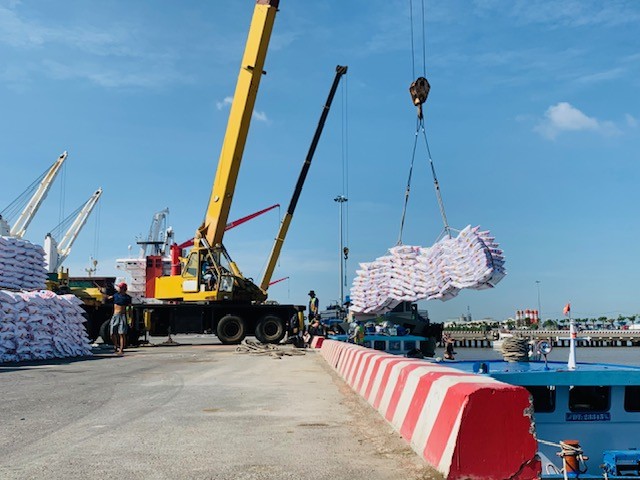 News
News
The amount of imported fertilizer this month also reached its highest level in the past two years, since July 2021.
Specifically, data from the General Department of Customs shows that in August, Vietnam imported more than 472,283 tons of fertilizer, equivalent to 159 million USD, an increase of 54% in volume and an increase of 85% in value compared to July.
 |
| Export port of Ca Mau Fertilizer Factory. Illustration |
Accumulated in the first 8 months of the year, fertilizer imports reached nearly 2.5 million tons, equivalent to 833 million USD, an increase of 13% in volume but a decrease of 19% in value compared to the same period in 2022.
Imported fertilizer prices in August were at 338 USD/ton, up 19% compared to July but down 26% compared to August 2022.
On average in the first 8 months of the year, the price of imported fertilizer is estimated at 347 USD/ton, down 25% compared to the same period in 2022.
In the first 8 months of this year, China is still Vietnam's largest fertilizer supplier, accounting for nearly 50% of total imported fertilizer. Specifically, Vietnam imported more than 1.2 million tons of fertilizer from China, equivalent to 375 million USD, an increase of 15% in volume and 14% in turnover compared to the same period in 2022.
After China, Japan is the second largest fertilizer supply market for Vietnam with 225,284 tons, equivalent to 21 million USD, down 14% in volume and 49% in turnover compared to the same period in 2022. Supply Fertilizers from Japan account for about 9% of Vietnam's total fertilizer imports.
On the contrary, fertilizer imports from Laos in the first 8 months of the year increased 110% in volume and 28% in value over the same period, to 185,793 tons and 66 million USD. Fertilizer supply from Japan accounts for about 9% of Vietnam's total fertilizer imports.
In another development, in early September, China announced a restriction on urea exports, causing urea prices to skyrocket globally.
Specifically, according to information from Bloomberg, China is currently requiring companies to temporarily stop exporting urea fertilizer. The country has asked some fertilizer producers to temporarily suspend urea exports after domestic prices skyrocketed. This is a move that could limit supply and increase costs for farmers in countries that specialize in importing fertilizers like India.
Currently, some of China's "big" fertilizer producers have temporarily stopped signing new export contracts since the beginning of this month according to the Government's order.
Domestically, developments in the domestic urea market also closely follow the world urea market . Since September 7, domestic urea prices have shown signs of increasing according to world prices. Specifically, Ca Mau urea price (at the factory) on September 7 was 11,200 VND/kg, up from September 6 (10,000 VND/kg). Phu My urea price in Saigon/Long An area is 10,400 - 10,600 VND/kg; Urea Ninh Binh 9,500 VND/kg; Ha Bac urea 9,650 VND/kg.
Dr. Phung Ha - Vice President and General Secretary of the Vietnam Fertilizer Association said that world urea prices have increased since September 7 because Russia and China have also restricted urea exports. Although it is not currently the peak of the domestic crop, domestic fertilizer prices have also increased following the rise in world urea prices. According to this increasing momentum, it is predicted that in this year's Winter-Spring crop, when the whole country enters the peak season, urea prices will continue to increase.
Facing fluctuations in world urea prices as well as China restricting urea exports, and at the same time the country is still importing urea in large quantities, Dr. Phung Ha said: Currently, we do not have a regulation. No decisions on urea export restrictions, and urea supply despite surplus. But given the unpredictable developments in the world urea market in the coming time, it is necessary to consider the direction of still exporting but ensuring domestic urea supply, avoiding scarcity and urea prices being pushed up. too high.